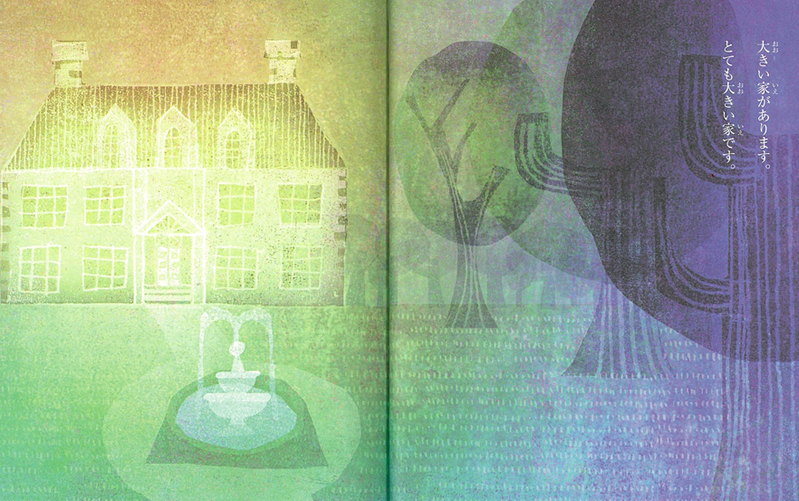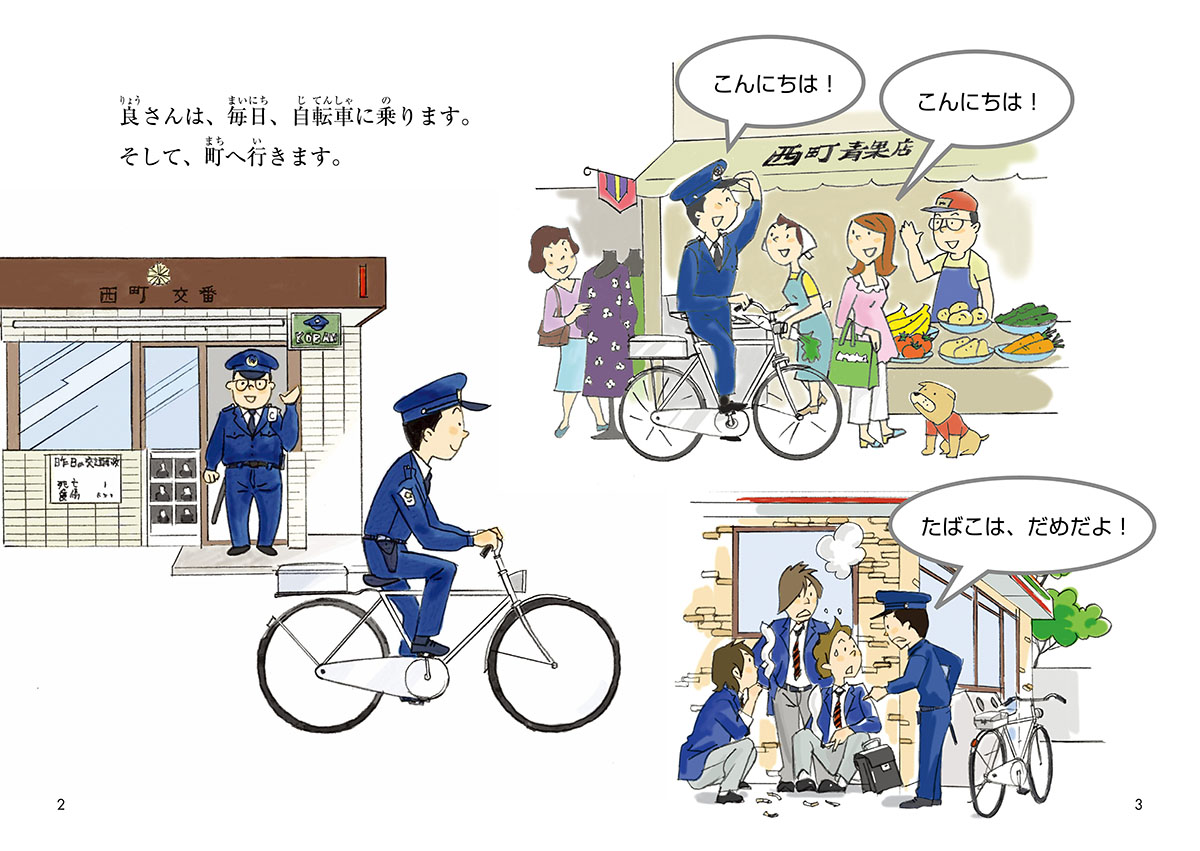How to start tadoku
Tadoku recommends everyone to start with extremely easy books that are both enjoyable and informative. They come with many pictures and audio recording so you don’t have to have Japanese at all at the start. You will enjoy them so much that you will want to read more. By and by, reading texts becomes fun and your Japanese gets better and better both in reading and speaking.

Many students have learnt to read through tadoku. They improved their speaking, increased their vocabulary including kanji. You can start our books if you know some hiragana. If you don’t, there’s always audio recording of entire books. If you are at intermediate or advanced level but haven’t read a whole book in Japanese, we recommend that you start the easiest level.
Four Golden Rules
At the initial stages, there are four important rules to follow in tadoku.
-
Start from scratch.
Choose easy books you can enjoy without translating. Look at the pictures carefully. They will help your understanding and make you want to read more.
-
Don’t use a dictionary.
Looking up unknown words in a dictionary slows you down and kill the joy of reading. Rather, let the pictures tell the story and keep on reading.
-
Skip over difficult words, phrases and passages.
If the pictures don’t help, don’t hesitate to skip over difficult parts and keep on reading. If you enjoy the overall story, you don’t have to understand every minor detail!
-
When the going gets tough, quit the book and pick up another.
The going gets tough when the book is not suitable for your level or your interest. Simply throw the book away and start reading something else.
Japanese graded readers can make following the four rules very easy. They are Nihongo Yomu Yomu Bunko — published by ASK, Nihongo Tadoku Books by Taishukan and Tadoku Bunko published by the Tadoku Supporters. All readers come with pronunciation cues of Kanji, or furigana, printed alongside each Kanji.
Your first step to reading in Japanese
Graded readers have five levels of difficulty. A sample page from a Level 0 reader. First take a good look at the pictures.
Who is riding the bike?
What is his job?
Who is he greeting whom?
Who is smoking?
…
Next, listen to the audio and look at the pictures. Then listen and read the text at the same time. Make sure you take in as much information as you can from the pictures.
Reviews from tadoku practitioners
Here are some of the views of the students who have done tadoku reading for more than 6 months. Many found reading Japanese extremely difficult because of the three separate sets of writing system, but tadoku readers made it easier and easier.
I was afraid of Japanese writings and I tried not to look at them. But now I can even read books as difficult as level 4. I have picked up many complicated words and kanji from simply enjoying books. I used to buy wrong food in supermarkets because I couldn’t read but that doesn’t happen any more.
I tried to learn some kanji using practice books but it didn’t work. Eventually I gave up because I thought I was just too stupid for that. I think a lot of foreigners in Japan feel the same way as I felt. I lived in Japan pretending that all street signs and adverts were not there. It was only after I started tadoku that they began to mean something. That gave me a lot of confidence and made me feel really great.
FAQ
Q. Why no dictionaries? You can’t learn new words, can you, if you pretend you don’t see them?
A.
Finding out meaning through a dictionary doesn’t help you learn them, does it? You can only ‘take in’ a new word by coming across it several times in narratives. It is the same with your mother tongue: You don’t really know each and every word in the book you are enjoying, but reading many books magically increase your vocabulary.
The tadoku way says momorization does not come first, but reading does.
Q. Which level should I start with?
A. Start with readers you find ‘too’ easy. They are the books you can read without a dictionary. Picture books without texts, with a little bit of texts but with pictures to help you, or Level 0 books from Yomu-Yomu Books or Nihongo Tadoku Books.
Q. Furigana will not let you learn kanji, will they?
A. Furigana let you read at an enjoyable pace and you become more focused on the content than on each kanji. This actually helps you to learn kanji much better. When furigana reading start to feel natural, try reading texts without furigana.
So, shall we start?
There are free samples at Level 0. Try them and if you find them easy and enjoyable, there are more where they come from.
the Japanese Book-Reading Club*FREE
Want to read Japanese books? Join us if you know a little Hiragana. Booktalks after reading can be fun as well!
Saturdays 15:30~17:00 @Shinjuku
≫ More informationJapanese Language Classes
You read a lot, talk a lot, and write a lot to begin and improve your Japanese.
≫ More information